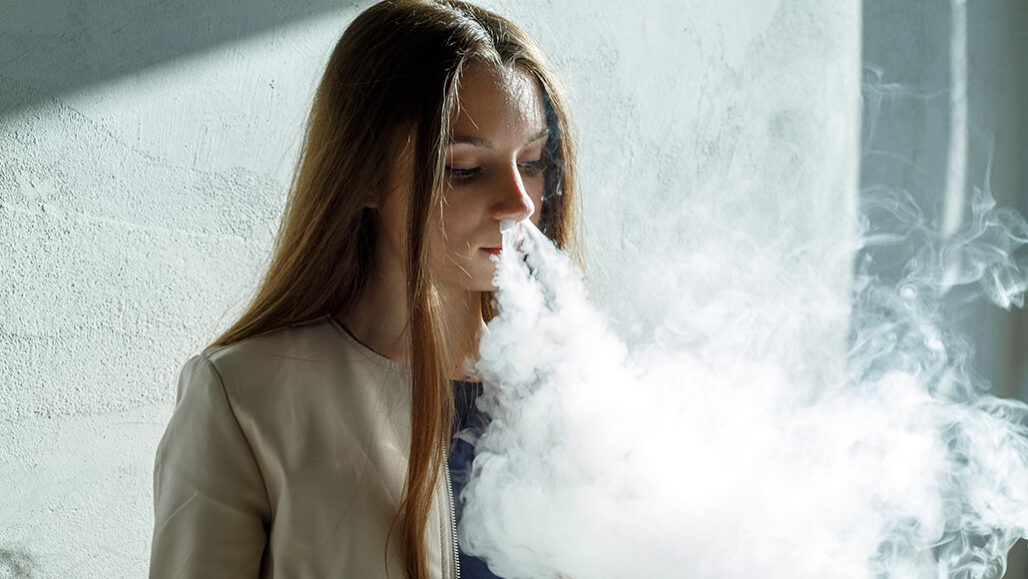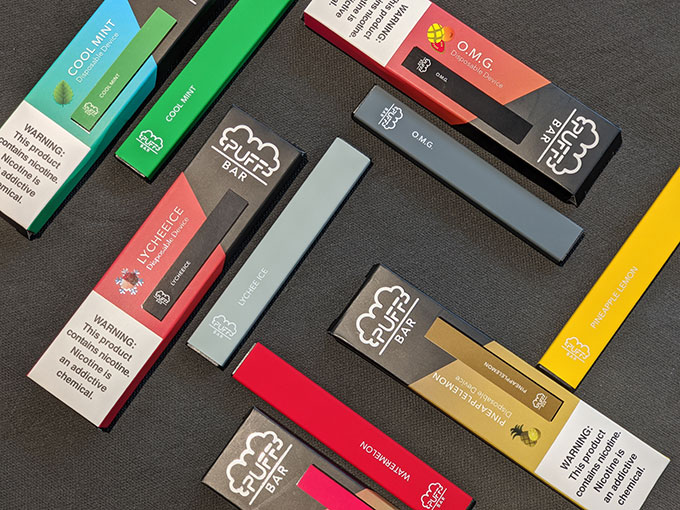COVID-19 risk linked to vaping, but addicted kids find it hard to stop
Even before the pandemic, interest in giving up vaping was growing in teens

Rates of vaping have been steadily climbing among kids and young adults. Now vaping is being linked to COVID-19, offering yet another reason to try quitting.
AleksandrYu/iStock/Getty Images Plus
By Janet Raloff
A large and growing share of adolescents and young adults vape. A new study now offers a potent reason not to: It links vaping with a heightened risk of becoming infected with the new coronavirus.
As of last year, more than one in every four U.S. high school students reported they were currently vaping. More than one in every 10 of them said they vaped daily.
Bonnie Halpern-Felsher is a developmental psychologist. Her work at Stanford University in California has focused on why teens vape and how it impacts them.
For a new study, her team looked at COVID-19 risk in people ages 13 to 24. Compared to non-users, vapers and smokers were no more likely to have breathing difficulties, extremely low energy or other symptoms of the disease. However, those who had both vaped and smoked in the last 30 days were 4.69 times more likely to have coronavirus symptoms.
The study also looked at people who had been tested for the new virus, even if they showed no symptoms. “If you used an e-cigarette — ever — you are five times more likely to be diagnosed with COVID-19,” Halpern-Felsher reports. Among teens who had ever vaped and smoked, “you are seven times more likely to be diagnosed,” she adds.
“These really are the first data to say that as a teenager, you are at risk of getting COVID-19 through your vaping,” she says. And vaping seems responsible for most of the greater risk, she says. Adding cigarettes to the mix just heightens it. “We’re basically saying e-cigarettes are the scary part.”
Her team reported its findings in the October 1 issue of the Journal of Adolescent Health.

Educators and Parents, Sign Up for The Cheat Sheet
Weekly updates to help you use Science News Explores in the learning environment
Thank you for signing up!
There was a problem signing you up.
Both smoking and vaping can harm the immune system and lungs, Halpern-Felsher notes. So tobacco products may put exposed people at greater risk of becoming infected, she says. And since vaping and smoking can cause coughs and other respiratory effects, it’s hard to know if “symptoms” of COVID-19 were due to that infection or the tobacco products themselves.
Added risk may come from the fact that many vapers use e-cigs socially. Sharing vaping products may spread the coronavirus. And exhaled plumes of vapor may carry any virus into the air. There it lingers and may be picked up by others nearby, Halpern-Felsher says.
Who wants to quit?
Young vapers had plenty of reason to quit long before the pandemic. In fact, for several years now, increasing numbers of young vapers have been wanting to stop — but have had trouble doing so. That’s based on new research by Tracy Smith. She’s an experimental psychologist. She works at Medical University of South Carolina College of Medicine, in Charleston.
Smith was part of a team from across the United States that had been interested in developing programs to help kids give up vaping. First, though, her team needed to know if kids actually wanted to quit.
The group looked at the raw data in one large survey. It’s known as PATH. That stands for the Population Assessment of Tobacco and Health. Nearly 15,000 kids between the ages of 12 and 17 took part in this survey. Of them, 498 reported using e-cigs within the past month. Of these, 44.5 percent — nearly half — said they wanted to quit. In fact, one in four of these vapers said they’d tried to quit in the past year. Yet few were successful.
“Even some kids who are vaping infrequently may have trouble stopping,” Smith concludes from the data. Her team shared its findings August 17 in JAMA Pediatrics.
“I was surprised — happily surprised — that so many young people indicated they wanted to quit vaping,” says Halpern-Felsher. Until now, she notes, “we didn’t know how many kids wanted to quit.” So in that regard, she says, these new data are great.
But she also worries that they also may be outdated and low. The data come from 2016 to 2018. That’s before JUUL became popular with teens, Halpern-Felsher notes. And now there are the JUUL-like Puff Bars with kid-enticing flavors such as O.M.G. (short for orange, mango, guava). Both types deliver more nicotine than most earlier e-cigarettes. “So with the higher levels of nicotine [in these devices],” Halpern-Felsher worries, “kids may be finding it even more difficult to quit.”

Teen vapers are getting addicted to the nicotine found in many vaping liquids. Addiction is an illness. It can develop from use of initially pleasurable, habit-forming drugs, such as nicotine and opioids. An addiction causes changes in the brain. When effects of the drug wear off, the body begins to feel sick. And the brain may be unable to concentrate on anything until it temporarily satisfies the need for more of the drug.
National Jewish Health is based in Denver, Colo. It is one the top U.S. respiratory hospitals. On July 1, 2019, it rolled out My Life, My Quit. The program is designed to help kids and young adults give up e-cigarettes and other tobacco products. By June 2020, nearly 1,300 teens had enrolled.
“A lot of the young people we talk to are pretty heavily addicted to nicotine by the time they get to us,” says Thomas Ylioja. He’s a social worker and the program’s director. “We were regularly seeing 75 percent of youth who had to vape within 30 minutes of waking,” he says. That is a classic symptom of addiction.
His hospital also operates 19 state hotlines across the country to help people quit tobacco products. Indirectly, the coronavirus pandemic may help some kids quit, vaping, he now suspects.
Signups for My Life, My Quit, “saw a pretty drastic drop when states went into lockdown and schools closed in March,” he notes. Some kids would no longer have access to referrals to the program, which often came from schools. Others may have lost access to classmates or young adults who bought or shared vaping products with these under-age users.
But social distancing, distance learning and spending almost all of their time at home with parents may be cutting kids’ access to vaping products, Ylioja says. By the time communities open up again, he hopes teens will have learned where to find help for family members or friends who may want to give up nicotine. And a growing number of such emerging programs are now being aimed at teens.







